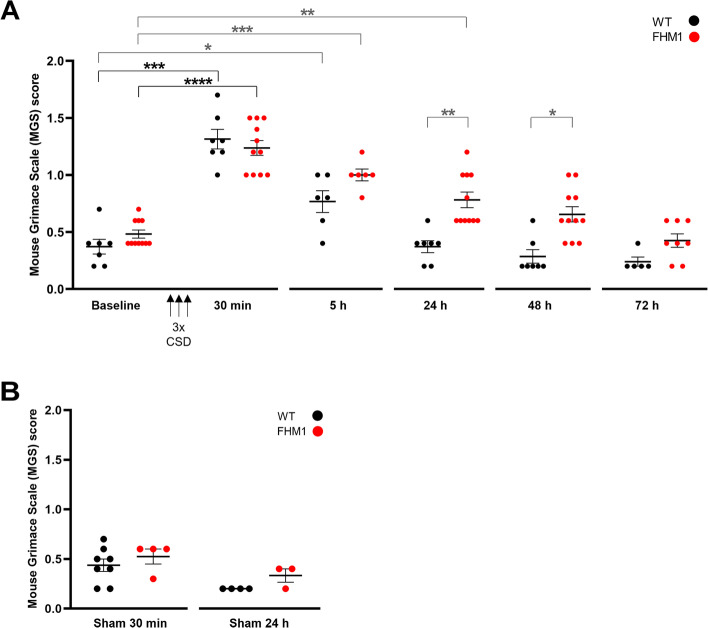Fig. 2.
Optogenetic CSDs trigger a prolonged elevation of mouse grimace scale (MGS) scores in freely behaving FHM1 mutant mice followed over time. A MGS scores are increased at 30 min after three optogenetically-induced CSDs (‘3x CSD’) in both WT and FHM1 mutant mice. At 5 h after CSD, MGS scores had reduced but remained elevated compared to baseline in both genotypes. Whereas in WT mice scores had returned to baseline levels at 24 h following CSD, scores in FHM1 mutant mice had normalized only at the 48-h time point. Compared to WT mice, MGS scores were higher in FHM1 mutant mice at both 24 and 48 h following CSD. B In sham-treated mice, which had undergone the same surgical procedures with a head-mount including electrodes but a ‘loose’ optic fiber placement, that allowed blue light stimulation without induction of a CSD, MGS scores were not different from baseline at 30 min and 24 h after photo-stimulation in both genotypes, with no genotypic difference. * = p < 0.05, ** = p < 0.01, *** = p < 0.001, and **** = p < 0.0001. Black asterisks and brackets: uncorrected p-values. Grey symbols: corrected p-values (after Kruskall-Wallis; see Results text for number and nature of corrections)

